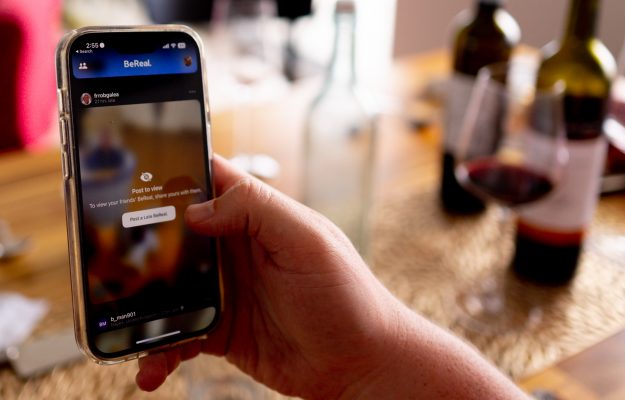Consumers who discuss wine on social networks and the web are mostly men, Millennials and live in the Central-Northern Italy area; conversations are mainly about red wine (60%), followed by those about white wine (38%); the most valued characteristics of wine are territoriality, sense of conviviality, sustainability, quality and food pairings; most consumers say they drink wine at home (61%), while as far as purchasing is concerned, 70% of the conversations mention traditional channels, and the remaining 30% online channels; those who buy from producers' websites do so mainly for a better buying experience and the opportunity to access loyalty programs. These are the most important aspects of the research, conducted by PwC Italy, in collaboration with Gruppo Meregalli, a historic wine and spirits distribution company in Monza, presented yesterday afternoon in the talk “Who are today’s digital wine consumers?” (with distributors from Club Excellence, which brings together 20 of Italy’s biggest players: from Sagna to Gruppo Meregalli, from Cuzziol Grandivini to Pellegrini, from Balan to Sarzi Amadè, from Vino & Design to Teatro del Vino, from Proposta Vini to Bolis, from Les Caves de Pyrene to Premium Wine Selection, from Ghilardi Selezioni to Visconti 43, from Première to AGB Selezione, from Philarmonica to Spirits & Colori, from ViteVini to Apoteca).
At the center of the discussion were current wine market trends, consumer buying behaviors and preferences, both online and offline, and future scenarios of an ever-changing field. The research analyzed 39,000 posts shared by users, showing that those who talk about wine in social and web channels mainly belong to the Millennials generation (followed by Gen-X and Gen-Z), live in Central-Northern Italy and are men (56%). Gen-Z users who discuss wine, on the other hand, are predominantly women, and the channels most used to discuss wine are Twitter (49%) and Facebook (46%), while if we focus on Gen-Z, there emerges a use of social channels that most belong to them, namely Instagram, YouTube and Tik Tok. Out of a base of 7,673 conversations regarding wine types, 60% are about red wine, 38% about white wine, and the remaining 2% about rosé wine.
The characteristics most valued in a wine are: territoriality, a sense of conviviality, sustainability, quality (in terms of perceived taste) and pairings with dishes, while criticism of wine comes, mainly, in relation to alleged negative effects on health and for abuse in consumption. In addition, while red wine is often associated with books, white wine evokes among users images relatable to summer days and use in the preparation of recipes, and rosé wine is appreciated by a loyal niche of consumers.
The identikit of the red wine consumer is: Millennial, between 25 and 34 years old, male, with a marked interest in sports. Among the goods she is most likely to buy online are: glasses, earphones and cars. On the other hand, the white wine consumer is Millennial, female, with a marked interest in fashion & beauty, and her main spending items are vacations, airline tickets and car accessories. Choosing rosé, on the other hand, are mainly men, Millennials and sportsmen who mainly buy glasses, earphones and cars.
Among the crucial issues, in order to bring the audience closer to the purchase, is the study of consumption habits and places: with this in mind, out of a total of 1,205 conversations, the majority of users claim to consume wine at home (61%). The audience that claims to consume wine outside the home is predominantly female, consumes wine in their free time, while listening to rap or Latin music, and in locations near the sea. The users who consume wine at home are predominantly male, and show a predisposition to watching sports programs or dramatic movies and reading historical, literary, or essay books.
Driving the consumer’s choice on the traditional shopping channel (70%) versus online (30%) is first and foremost the assortment (40%), while for 25% it is a matter of habit and convenience, for 25% the experience matters, and only 10% are influenced by price and promotions. In the offline channel, it remains crucial to identify consumers’ needs in order to attract them to one’s store. For this reason, in wine stores, the most sought-after proposal prevails, the quality of the assortment, the guided purchase, the 360-degree experience, while in supermarkets, habit and convenience rule: when you go shopping, you take advantage of it to buy wine. Those who buy from producers’ sites do so mainly for a better shopping experience and the opportunity to access loyalty programs: offers, discounts and promotions would make them more inclined to share their data.
Optimizing the pathway - online and offline - makes it possible to identify the drivers that encourage or discourage the final purchase, and to implement retention, loyalty and new user acquisition strategies. It emerges across the board how online shoppers are interested in issues such as wellness & beauty (69% of users) and sustainability (69%), so much so that they are willing to pay a premium for groceries that have sustainable packaging (44%). In addition, the strategies that create the most engagement on this target audience are membership & loyalty activities, partnerships, and the development of technologies in line with sustainability.
Copyright © 2000/2025
Contatti: info@winenews.it
Seguici anche su Twitter: @WineNewsIt
Seguici anche su Facebook: @winenewsit
Questo articolo è tratto dall'archivio di WineNews - Tutti i diritti riservati - Copyright © 2000/2025









































































































































































































